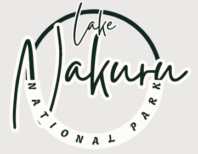Lake Nakuru National Park is renowned for its pivotal role in the conservation of two endangered rhinoceros species: the black rhino (Diceros bicornis) and the white rhino (Ceratotherium simum). The park’s efforts have transformed it into a critical sanctuary for these majestic animals, helping reverse the severe decline of rhino populations due to poaching and habitat loss.
1. History of Rhino Conservation at Lake Nakuru
Rhino conservation efforts at Lake Nakuru began in earnest in the 1980s when Kenya, along with global conservation agencies, recognized the alarming rate of poaching threatening Africa’s rhinos. Lake Nakuru National Park was designated as a rhino sanctuary due to its natural habitat, relatively enclosed ecosystem, and robust security infrastructure.
The introduction of both black and white rhinos into the park was a crucial step in Kenya’s national conservation plan. Lake Nakuru soon became one of the first parks in Kenya to have a fully fenced boundary, a strategy implemented to enhance protection from poachers and manage human-wildlife conflicts.
2. Black Rhino vs. White Rhino Conservation
- Black Rhino (Diceros bicornis): The black rhino is critically endangered, and Lake Nakuru is home to a significant population of these animals. Black rhinos are browsers, feeding on bushes and trees, which is why the park’s woodland areas, particularly around the acacia trees, are critical to their survival.
- White Rhino (Ceratotherium simum): The white rhino, although less critically endangered than the black rhino, still faces severe threats from poaching. White rhinos are grazers, feeding primarily on grass, and can often be spotted in the park’s open savannah grasslands. Lake Nakuru hosts a strong population of southern white rhinos.
3. Anti-Poaching Efforts
Poaching remains the greatest threat to rhino populations, driven by the illegal demand for rhino horn. Lake Nakuru National Park has implemented several strategies to combat this threat:
- Fencing of the Park: The entire park is enclosed by an electric fence, which significantly reduces the risk of rhino poaching and helps in monitoring the movement of wildlife.
- Park Rangers and Surveillance: Highly trained rangers patrol the park 24/7, employing both foot patrols and modern technologies such as drones and GPS tracking. The park’s collaboration with Kenya Wildlife Service (KWS) has been vital in boosting security.
- Rhino Monitoring: Continuous monitoring of rhino populations through GPS trackers and photographic identification helps conservationists and park management keep track of individual rhinos, monitor their health, and prevent potential poaching incidents.
4. Breeding and Population Growth
Lake Nakuru has become a vital breeding ground for both species of rhinos. The sanctuary’s enclosed and protected environment provides an ideal setting for population growth. Successful breeding programs have led to steady increases in both black and white rhino numbers, with births regularly reported by park authorities.
The park also participates in regional and international programs that promote genetic diversity through the relocation of individuals to other conservation areas in Africa.
5. Conservation Challenges
Despite the positive strides made, rhino conservation at Lake Nakuru faces several challenges:
- Poaching Pressure: The demand for rhino horn continues to put pressure on Lake Nakuru’s security measures. Poachers often use sophisticated methods, making anti-poaching efforts an ongoing battle.
- Habitat Loss: Encroachment of surrounding areas, illegal logging, and pollution from nearby settlements pose risks to the park’s natural ecosystem. These activities affect the availability of food for rhinos and other wildlife.
- Water Levels: Rising water levels in Lake Nakuru, often due to climate change, have submerged large areas of the park, reducing habitable land for rhinos and other species.
6. Community Involvement in Conservation
Involving local communities in conservation efforts has been key to the park’s success. Lake Nakuru National Park engages with nearby communities by providing jobs, education, and awareness programs, creating a sense of shared responsibility for protecting rhinos.
Local people, especially former poachers who have been rehabilitated into rangers or conservationists, play an important role in safeguarding wildlife.
7. Future of Rhino Conservation at Lake Nakuru
The future of rhino conservation at Lake Nakuru National Park looks promising, thanks to the continued efforts of conservation organizations, park authorities, and the government. Plans to enhance surveillance, bolster anti-poaching measures, and expand community engagement are underway to ensure the park remains a safe haven for rhinos.
In conclusion, Lake Nakuru is a conservation success story, providing a crucial sanctuary for Kenya’s rhinos. By supporting these efforts, visitors can play a part in protecting one of Africa’s most iconic and endangered species. Eco-tourism initiatives that promote responsible travel are essential to ensuring that the park continues to thrive as a haven for rhinos and other wildlife.
